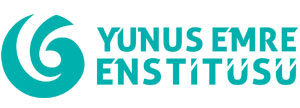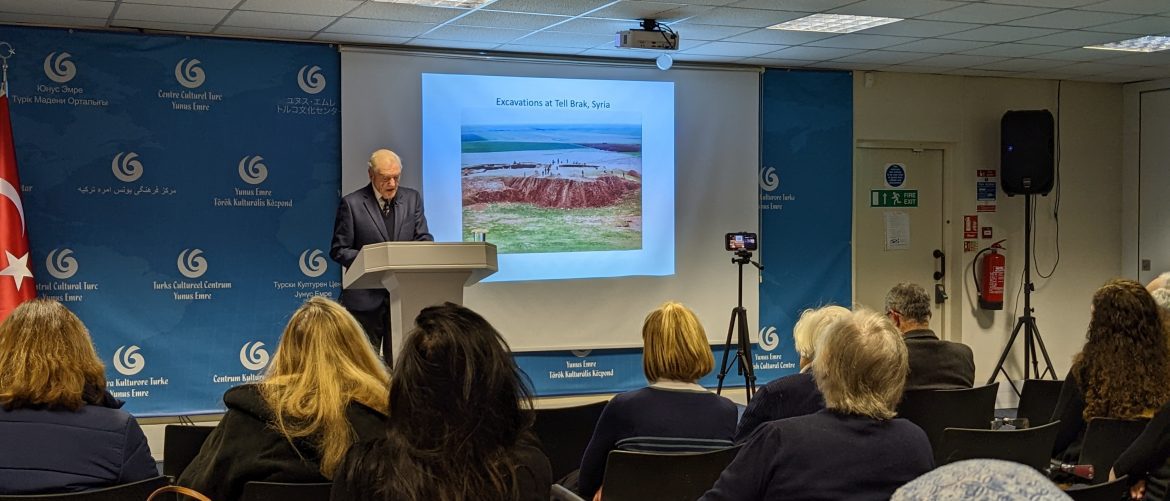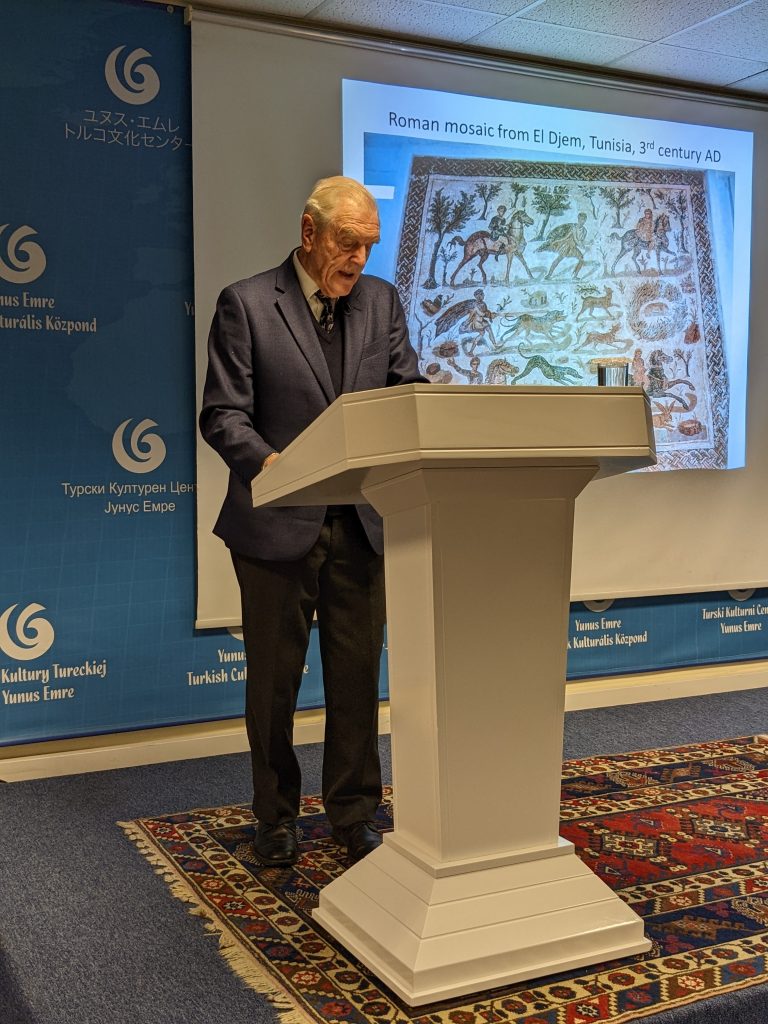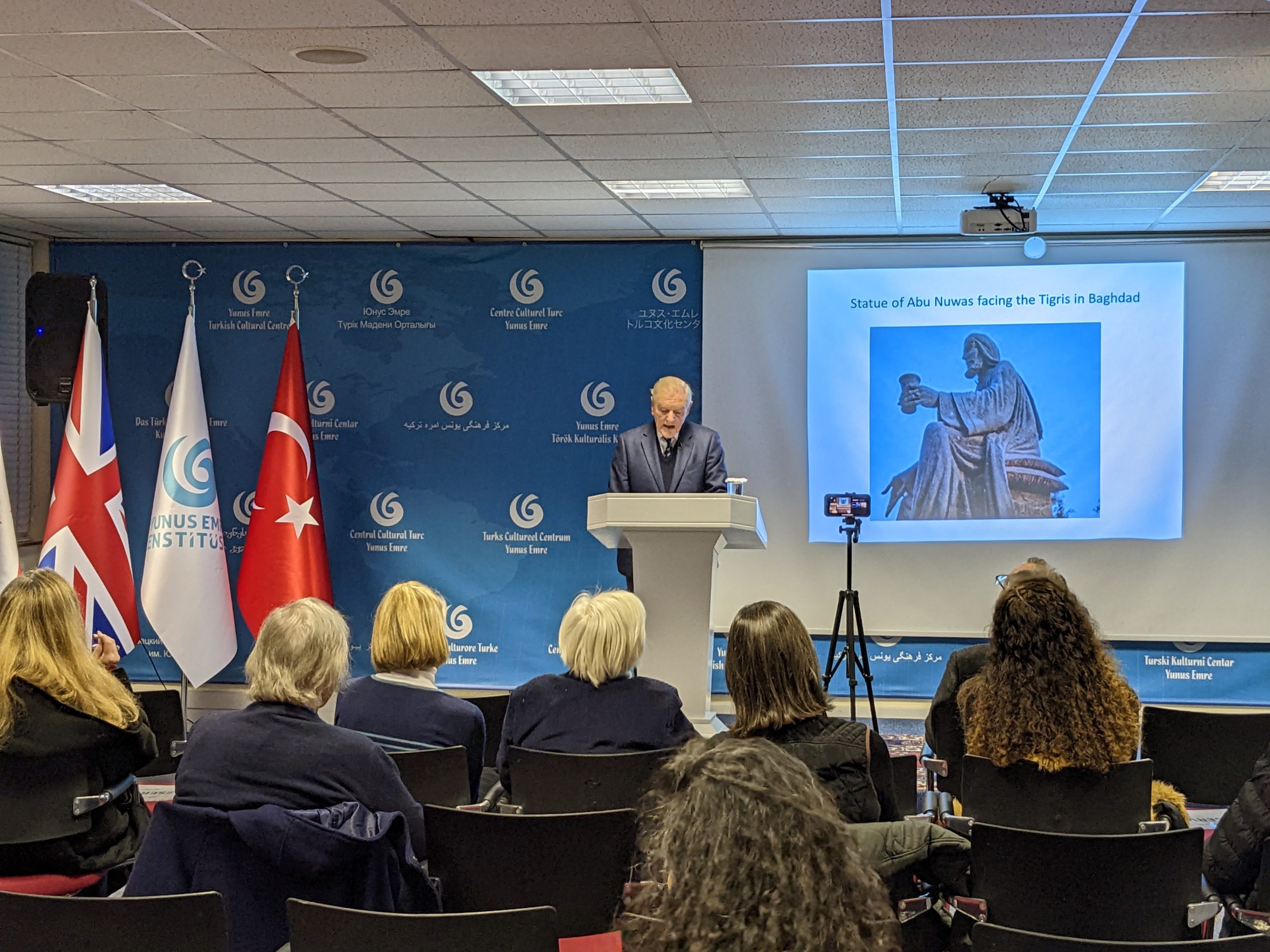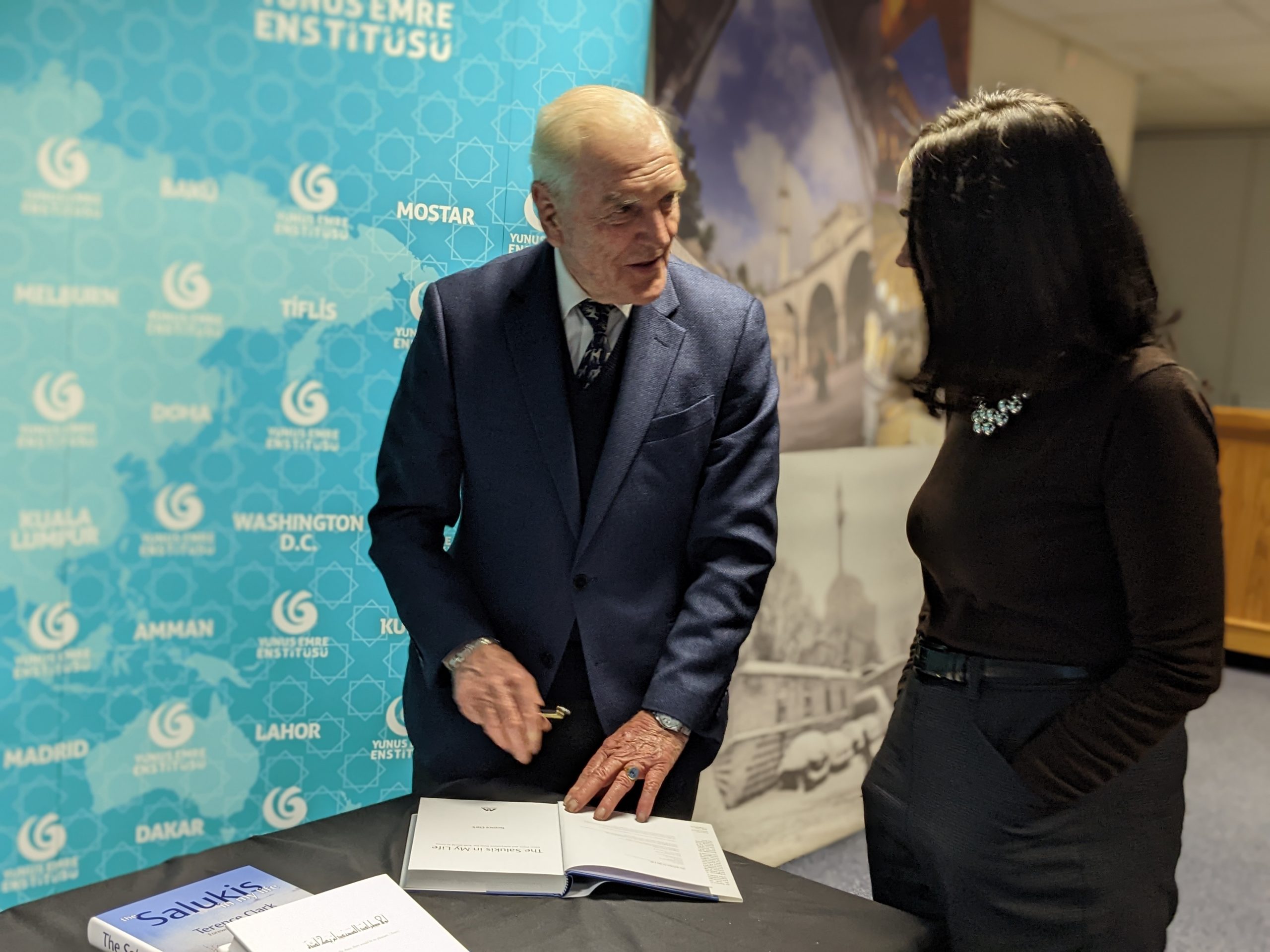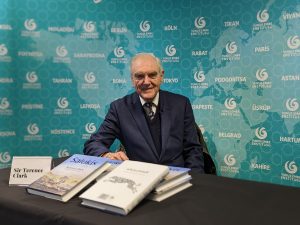Yunus Emre Institute London was delighted to present a new and fascinating talk as part of the Arts & Culture Lecture series with Sir Terence Clark on “The Evolution of the Saluki or Tazı as an Enduring Part of the Cultural Heritage of the Middle East” on Thursday, 8th of December at 19:00.
.
In this special talk, Sir Terence Clark focused on the importance of Salukis, namely the Saluki hunting hound, as a unique part of the Middle Eastern cultural heritage that uniquely links the prehistoric past with the present day in an unbroken continuum.
Focusing on the physical features of the Salukis during the first parts of his talk, Sir Terence Clark explained how Salukis, as a rare hunting hound in the Middle Eastern context, might look quite different from the image of the Saluki in the west with its tall, elegant frame and generously feathered or long-haired ears and tail. He claims that the native Saluki has much less feathering or is entirely smooth or shorthaired and of smaller stature, often with cropped ears and henna-stained feet to prevent damage while hunting as it is a working hound that has been bred for millennia primarily for coursing gazelle and deer over open terrain. During this part of the talk, Sir Terence Clark demonstrated example pictures of Salukis in their natural habitat in Mesopotamia and pointed out that although staining feet and tails of Salukis with henna was already a custom over 500 years old, the emergence of it as a hunting hound in history goes back much farther into the cradle of civilization in Mesopotamia.
Sir Terence Clark discussed about what it is that makes a mere dog so special, particularly in a middle eastern context where dogs in general are shunned. He suggested that the history shows that the saluki is no ordinary dog, and it should never be referred to as kelb, which means dog in Arabic, but instead it should only be referred to as “Saluki” or “al-Hurr”, which means “The Free” or “The Noble One”. He stressed that this special status is not of recent origin, as the saluki has played an exceptional role in middle eastern societies for millennia. It was even referred to as “The Companion of Kings”, as it was so often portrayed in the company of rulers across the region either beside an Egyptian pharaoh or an Ottoman Sultan.
During the second part of the talk, Sir Terence Clark analysed the examples of various Saluki skeletons that were found in Mesopotamia and the Middle East, by using the accounts of archaeologists from different eras. He gave examples of the representation of Salukis in the prehistoric period as a prominent symbol depicted on wall paintings or on various artifacts such as painted pottery pieces. He also talked about the oldest representations of the Saluki type of hunting hound on impression seals as described by the excavators, and the saluki figurines dating nearly 6000 BC.
Elaborating on the Saluki records in history, Sir Terence Clark then discussed the vibrant interest of the Romans who were also equally fond of hunting with Salukis and represented them often in their mosaics all over the Middle East and North Africa. He suggested that the Saluki record is then carried on by the pre-Islamic poets of the Arabian Peninsula, as poetry has always been an important part of Arabic culture. In this regard, Sir Terence Clark gave examples of how the Salukis were mentioned in prominent literary works such as prominent qasidas of the great poets in the pre-Islamic era and during the late 6th century. Through a careful reading of these poems and medieval manuscripts in which Salukis are illustrated, Sir Terence Clark systematically explored the origin of Salukis and highlighted the similarities between the ways in which they are presented in the past and the present.
.
Sir Terence concluded his speech by stating that, despite the injunction on Muslims not to handle dogs, which are generally regarded as najis or unclean unless spiritually cleansing themselves afterwards, an exception was made for the Salukis from the beginning of Islam. He stated that the evidence for this can be found in the Qur’an and Hadith, or sayings attributed to the Prophet.
Overall, Sir Terence Clark illustrated how the tradition of owning Saluki-like hunting hounds has managed to survive many upheavals that have beset the region over the centuries, and that it continues to experience an extraordinary revival in some regions today. Its unique place in the Middle East’s cultural heritage remains assured.
The event concluded with a lively Q&A session from the audience and a book signing by Sir Terence Clark of his noted work “The Salukis in My Life: From the Arab World to China”.
.
About the Speaker:
Sir Terence Clark graduated from the Royal Air Force as a Pilot Officer Russian linguist. He then entered the British Diplomatic Service and was sent for training in Arabic to the Middle East Centre for Arab Studies in Lebanon. His career took him all over the Middle East and North Africa, with service in Bahrain, Jordan, Morocco, the Trucial States (later United Arab Emirates), Oman, and Libya and culminated with his appointment as Ambassador first to Iraq and then to Oman. He acquired his first Salukis in Iraq but went on to breed them and course with them in Europe. In retirement he has travelled extensively in the region and wider afield in Central Asia to keep in touch with exponents of the breed there. He is the author of several books and many articles on the history and development of Salukis in their countries of origin.
For more information on the event please visit our website: https://yeelondon.org.uk/ or email at londra@yee.org.tr
